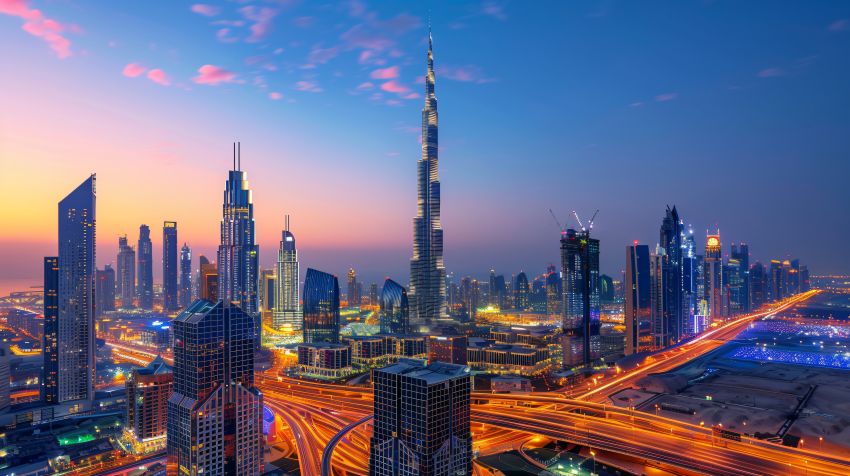≡-Saudi Arabia, UAE, Qatar, Oman, Bahrain, And Kuwait Push Gulf Tourism To New Heights: What You Need To Know – Viral of Today
<> Viral of Today <>
Home » Middle East » Saudi Arabia, UAE, Qatar, Oman, Bahrain, And Kuwait Push Gulf Tourism To New Heights: What You Need To Know Monday, June 23, 2025The tourism sector in the Gulf Cooperation Council (GCC) countries is poised for remarkable growth, with visitor spending projected to surge to $224 billion by 2034. This surge is fueled by a combination of economic diversification, mega-projects, infrastructure upgrades, and relaxed visa policies, as the region shifts its focus away from oil and towards sustainable, non-oil-driven economic growth. New data from the GCC Statistical Center, reported by Emirates News Agency – WAM, paints a picture of an evolving economic landscape, with tourism emerging as a vital pillar of the region’s future.Economic Diversification and Its Role in Tourism GrowthAs the GCC nations, particularly Saudi Arabia, ramp up efforts to diversify their economies, tourism is being integrated into national visions as a key driver of future growth. The move to reduce dependency on oil has given rise to a host of ambitious projects across the region. Saudi Arabia, with its Vision 2030 initiative, is leading the charge by targeting a monumental increase in tourism’s contribution to its gross domestic product (GDP). The kingdom aims to raise the sector’s contribution from just 3% to 10% by 2030, with an ambitious goal of attracting 150 million visitors annually. Mega-projects such as NEOM, a futuristic city in the desert, are central to this transformation.These investments are creating a fertile ground for growth in the tourism sector. According to the latest figures from GCC-Stat, international visitor spending in the region amounted to a substantial $135.5 billion in 2023, marking a 28.9% increase compared to pre-pandemic numbers in 2019. This trend is expected to continue, with tourism contributing a significant 13.4% to the region’s total exports by 2034, further highlighting the growing role of tourism in the economies of these nations.Saudi Arabia’s Vision 2030: A Game-Changer for TourismSaudi Arabia is undoubtedly at the forefront of the region’s tourism revolution. With Vision 2030, the kingdom has laid out an ambitious blueprint for transforming itself into a global tourism hub. Central to this vision is the diversification of the country’s offerings, moving beyond religious tourism to encompass cultural, adventure, and luxury tourism. The launch of NEOM and the development of other mega-projects are just a glimpse of what is to come. These initiatives aim to create a thriving tourism ecosystem, offering visitors everything from luxury resorts to high-tech cities, alongside cultural and heritage tourism.Saudi Arabia is also making significant strides in aviation, with massive investments in airports and air travel infrastructure, making it easier than ever for international tourists to visit. The kingdom’s commitment to improving safety and security standards further boosts its appeal, positioning it as a premier destination in the Middle East.UAE: The Luxury Tourism PowerhouseThe UAE has long been a leader in the Middle East’s tourism sector, and its Tourism Strategy 2031 aims to solidify its position as a luxury tourism powerhouse. The country is looking to double down on its established formula of high-end experiences, with a particular focus on offering cultural fusion, world-class shopping, and luxurious accommodations. Dubai, with its futuristic skyline, and Abu Dhabi, with its cultural offerings, continue to lead the charge.Under the UAE’s strategy, the country is targeting 40 million hotel guests annually, further underlining the importance of the tourism industry to its economy. With continued investments in hospitality, retail, and entertainment infrastructure, the UAE is set to remain a top destination for international visitors, especially those seeking high-end luxury experiences.Qatar’s Tourism Transformation Post-World CupFollowing the success of the FIFA World Cup 2022, Qatar has positioned itself as a rising star in the global tourism sector. The country is refining its urban tourism appeal, with significant investments in infrastructure, leisure facilities, and entertainment options. Qatar’s strategic location and world-class hospitality have allowed it to offer a unique blend of cultural heritage and modern luxury, making it an attractive destination for both leisure and business travelers.Qatar’s tourism sector is expected to continue growing, with the government working to establish the country as a year-round destination, offering a mix of cultural, sporting, and entertainment experiences for visitors.Oman’s Natural Beauty: A Key Draw for TouristsWhile the GCC nations have focused heavily on urban development, Oman stands out for its focus on natural beauty as a key tourism asset. With its rugged mountains, pristine beaches, and scenic deserts, Oman has carved out a niche as a destination for nature-based tourism. The country is targeting 11 million annual visitors by 2030, relying on its natural landscapes to attract travelers seeking outdoor adventures, eco-tourism, and cultural exploration.Oman’s commitment to preserving its unique heritage and natural environment makes it an appealing choice for tourists looking for authentic, low-impact travel experiences. Its continued investments in infrastructure and tourism facilities are expected to enhance its position as a top eco-tourism destination.Smaller Players: Bahrain and Kuwait Making Strategic MovesEven smaller GCC nations like Bahrain and Kuwait are not lagging behind in the tourism race. Bahrain, for instance, is leveraging its Formula 1 Grand Prix to attract visitors, positioning itself as a key destination for sports tourism. The country is also investing in expanding its hospitality and entertainment offerings to create a more diverse tourism landscape.Kuwait, too, is focusing on entertainment infrastructure, with plans to develop new resorts, leisure centers, and cultural attractions. These efforts aim to diversify the country’s tourism offerings and increase the number of international visitors in the coming years.GCC’s Growing Competitiveness on the Global StageThe GCC nations continue to outperform the Middle East and North Africa (MENA) region in several key tourism indicators. All six Gulf states have ranked among the top Arab nations for passport power, enhancing their global competitiveness and making it easier for travelers to visit the region. Furthermore, the region has emerged as a leading player in terms of safety and security, with GCC countries outperforming the regional average in safety standards.This, combined with investments in modern airports, improved visa policies, and infrastructure upgrades, is transforming the GCC into a global tourism and business hub.Conclusion: A New Era of Gulf TourismThe GCC countries are collectively working toward becoming a global tourism powerhouse, each nation leveraging its unique strengths to attract international visitors. With ongoing investments in infrastructure, hospitality, aviation, and security, the Gulf region is on track to become one of the world’s most important tourism destinations. As visitor spending continues to rise, the Gulf nations are solidifying their position as key players in the global tourism landscape.The forecasted $224 billion in visitor spending by 2034 is just the beginning of what promises to be an exciting new chapter in the tourism industry. With diversification efforts gaining momentum, the GCC’s tourism sector is poised for continued growth, with each country making strategic investments that will shape the future of travel for years to come.References: Saudi Arabia Vision 2030, UAE Tourism Strategy 2031, Official Tourism Page of the countries mentionedTags: bahrain, GCC, kuwait, Middle East, NEOM, Oman, QATAR, saudi arabia, Tourism, UAE, Vision 2030
This information will surprise you!
See also
- Read until the end to discover everything.
- Important information you need to know.
- Interesting facts and helpful tips.
Conclusion
Did you enjoy the news? Keep following us daily!













